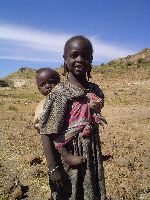Cablegate: Nicaragua: Civil Society On the March Again
VZCZCXYZ0000
OO RUEHWEB
DE RUEHMU #0956/01 2071938
ZNY CCCCC ZZH
O 251938Z JUL 08
FM AMEMBASSY MANAGUA
TO RUEHC/SECSTATE WASHDC IMMEDIATE 2958
INFO RUEHZA/WHA CENTRAL AMERICAN COLLECTIVE IMMEDIATE
RUEHBO/AMEMBASSY BOGOTA IMMEDIATE 1950
RUEHBR/AMEMBASSY BRASILIA IMMEDIATE 0100
RUEHBU/AMEMBASSY BUENOS AIRES IMMEDIATE 0075
RUEHCV/AMEMBASSY CARACAS IMMEDIATE 1300
RUEHLP/AMEMBASSY LA PAZ JUL 0213
RUEHME/AMEMBASSY MEXICO IMMEDIATE 5393
RUEHQT/AMEMBASSY QUITO IMMEDIATE 0476
RUEHSG/AMEMBASSY SANTIAGO IMMEDIATE 0223
RHEHNSC/NSC WASHINGTON DC IMMEDIATE
RUMIAAA/CDR USSOUTHCOM MIAMI FL//J2/J3/J5// IMMEDIATE
RUEAIIA/CIA WASHDC IMMEDIATE
RHBVNKP/USS KEARSARGE IMMEDIATE
RULYEGA/COMPHIBRON EIGHT IMMEDIATE
C O N F I D E N T I A L MANAGUA 000956
SIPDIS
DEPT FOR WHA/CEN GREENE
DEPT FOR INR/IAA EMERSON
DEPT FOR USOAS
DEPT PLEASE PASS TO AID/LAC
NSC FOR ALVARADO
KEARSARGE FOR COMMODORE PONDS
E.O. 12958: DECL: 07/22/2018
TAGS: NU PGOV PHUM
SUBJECT: NICARAGUA: CIVIL SOCIETY ON THE MARCH AGAIN
REF: MANAGUA349
Classified By: Ambassador Paul A. Trivelli, Resaons 1.4 (b and d)
1. (C) SUMMARY: After a successful march on June 27,
Nicaraguan civil society organizations rallied twice more to
speak out for democracy and against the Ortega
administration. On July 13, the Sandinista Renovation
Movement (MRS) and civil society organizations marched in the
neighborhood of Monimbo in Masaya ) the place where the
seeds of anti-Somoza resistance were planted in the late
1970s. In Managua, an estimated 10,000 people marched across
town to the National Assembly building on July 16 in an
effort to maintain the pro-democracy momentum that they
gained from their June 27 rally. Though the turn-out was
smaller than the previous march, spirits appeared high as
participants chanted slogans against dictatorship and Ortega.
The march demonstrated that diverse civil society groups,
many of which have historically refused to work together, are
coalescing and coordinating their efforts ) a rare positive
sign for democracy in Nicaragua. Beyond marches, however, it
remains unclear how civil society groups will seek to press
their agenda with the Ortega government, in an ever narrowing
democratic space.
"Ortega y Somoza son la misma cosa"
- - - - - - - - - - - - - - - - - -
2. (U) The town of Masaya became the center of the opposition
movement on July 13 as civil society actors organized a civic
assembly to march against the Ortega administration. Dora
Maria Tellez, the Sandinista Renovation Movement (MRS) leader
who had previously engaged in a 13-day hunger strike to
protest the loss of her party's legal registration, said that
they were doing the first civic assembly in the Monimbo
barrio in Masaya to "refresh Daniel Ortega's memory."
According to Tellez, this is the place where the seeds of
popular resentment were planted to topple the Somoza
government in February 1978. Tellez said that "as they
destroyed the Somoza dictatorship, they will also destroy the
dictatorship of Daniel Ortega and Arnoldo Aleman." This
sentiment was reflected by others in attendance and many
called for the Nicaraguan people to fight for their rights.
3. (U) Though touted to be all inclusive, the civic assembly
in Monimbo was organized by, and the majority of the
participants were party activists from, the Sandinista
Renovation Movement (MRS) political party, which lost its
legal registration on June 11, and has been one of the
primary mobilizers for the recent marches. This civic
assembly was slightly different from the other recent marches
in that it seemed to represent a more explicit attempt by MRS
to recall the "revolutionary spirit" of the 1970s.
March to the (Empty) National Assembly
- - - - - - - - - - - - - - - - - - - -
4. (U) A variety of civil society organizations, led by the
Coordinadora Civil (a grouping of over 600 NGOs and
associations), and including Movimiento por Nicaragua
(focuses on citizen participation and rights), JUDENIC
(promotes democratic principles in youth), Movimiento
Autonomo de Mujeres (promotes gender equality and womens'
rights), and Comision Permanente de Derechos Humanos
(promotes and defends human rights) amongst others (reftel),
coordinated the July 16 march in Managua in an effort to both
make their voices and opinions heard and to demonstrate that
the Nicaraguan people do not support the way the country is
being run. With an estimated 10,000 in attendance, this
march was smaller than the one on June 27 and fell short of
organizers' expectations, but people still came from all over
the country ) even as far away as Jalapa on the Honduran
border ) to assert their rights to democracy and freedom.
5. (U) As the people gathered, various leaders spoke out
against high food prices, hunger, and the Ortega
administration in general; all with the common theme of
"Dictadura no, Democracia si" (Dictatorship No, Democracy
Yes) throughout their speeches. During the speeches given in
front of the National Assembly building, Tellez declared that
the people attended the march to remind the government that
they have to respond to the problems of the country and that
all Nicaraguans "have the right to eat." However, almost as
soon as the crowds arrived at the National Assembly (which
was out of session) they started to leave, demonstrating a
possible a greater level of interest in the march rather than
in what civil society leaders had to say.
6. (U) Civil society leaders and observers commented to us on
the overall positive atmosphere of the march and emphasized
that the people marched from across the political spectrum in
support of unity and democracy. Unlike the previous marches,
only a few politicians were present, most notably the Vamos
con Eduardo (VCE-PLC) mayoral and vice mayoral candidates
Eduardo Montealegre and Enrique Quinonez, and there were few
party banners flying amongst the thousands of blue and white
national flags. Along the march route a few groupings of
Sandinista National Liberation Front party (FSLN)
sympathizers tried to provoke the crowd along the way, but
these were very minor perturbations to the large opposition
crowd.
So, what now?
- - - - - - -
7. (C) Because of the diversity of opposition organizations
involved in planning the march, a variety of slogans were
used, each of which were chanted in due course. However, the
lack of a single, clear message may have diluted the turnout
and the overall impact of the march. Civil society
organizations are searching for any possible avenue to rally
public support to stop the closing of democratic space by the
Ortega administration, but the array of slogans seemed to
indicate that the only idea they have been able to reach
consensus on thus far is to hold marches.
8. (C) During the marches and in subsequent media interviews,
civil society leaders have proposed a 'national dialogue,'
though what that term means is unclear. Each civil society
organization seems to have its own agenda for such a
dialogue. For example, the NGO Movimiento por Nicaragua
stresses transparency, inclusivity, abstention from attacks
on candidates, and that the MRS and the Conservative Party
(PC) be given back their legal status. Other NGOs, such as
Coordinadora Civil, believe the national dialogue should be
focused on addressing the growing social problems facing
Nicaragua. Though civil society is increasingly working
together, their differing views of a national dialogue and
lack of clarity on the outcome, may impede further tangible
progress.
9. (C) Comment: Despite the lower turnout, the July 16 march
in Managua brought together a diverse array of civil society
groups, many of which have historically refused to work
together, and built successfully upon the themes of the
earlier marches in support of democracy, improved social
services, and political freedoms. This breadth of
cooperation has not been seen in many years and is a positive
indication of Nicaraguan civil society's potential. However,
the civic assembly in Monimbo and its "revolutionary" slant
demonstrates that the various opposition actors hold
differing views. Not only do the differing views make it
difficult for them to coalesce into a single opposition
force, but their lack of even a unified slogan does not help
the cause. Though their marches have been fairly successful
and gained the attention of both the average citizen and the
Ortega administration, civil society seems unsure of the next
steps. These groups are planning another march for
mid-August, possibly to coincide with the National Assembly
returning to session. However, civil society will need more
than marches if they are to build on the momentum they have
gained and mobilize a broader segment of the population.
TRIVELLI


 UN News: Ceasefire The Only Way To End Killing And Injuring Of Children In Gaza
UN News: Ceasefire The Only Way To End Killing And Injuring Of Children In Gaza ICHRP: US-Japan-Philippines Trilateral Summit Makes The Philippines A Battlefield For US-China Conflict
ICHRP: US-Japan-Philippines Trilateral Summit Makes The Philippines A Battlefield For US-China Conflict East West Center: Environmental Journalist Alexander Kaufman Receives East-West Center’s Inaugural Melvin M.S. Goo Writing Fellowship
East West Center: Environmental Journalist Alexander Kaufman Receives East-West Center’s Inaugural Melvin M.S. Goo Writing Fellowship Compassion in World Farming: Octopus Farm Must Be Stopped, Say Campaigners
Compassion in World Farming: Octopus Farm Must Be Stopped, Say Campaigners UN News: Shipwreck Tragedy Off Djibouti Coast, Drone Attacks Continue At Ukraine Nuclear Plant, Madagascar Cyclone Update
UN News: Shipwreck Tragedy Off Djibouti Coast, Drone Attacks Continue At Ukraine Nuclear Plant, Madagascar Cyclone Update UN News: Aid Lifeline Reaches Sudan's Darfur Region In Bid To Avert ‘Hunger Catastrophe’
UN News: Aid Lifeline Reaches Sudan's Darfur Region In Bid To Avert ‘Hunger Catastrophe’